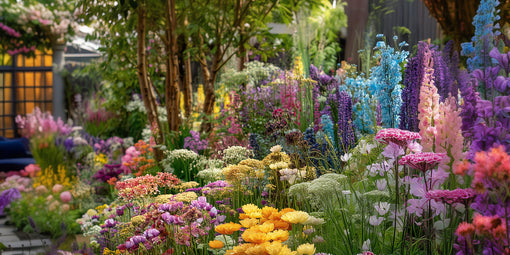
- Article published at:
Drawer menu

Delphiniums are one of those flowers that can be displayed just on their own and still take everyone's breath away. With its tall gracious stems, and striking colours, this flower is probably the most glamorous and classy flower there is.

According to Greek mythology, the Delphinium's is name was derived from the Greek word “delphis” or dolphin because of its unique shape which is similar to that of a dolphin.
However, in English, the flower is called Larkspur due to a resemblance of a claw of the larks in the shape of the flower.
In ancient times, people used Delphiniums for medicinal purposes and even for relaxation and for better sleep. They also used the flower to treat and cure the stings of scorpions and parasitism.
This is no longer the case today, because the flower contains toxins that may cause internal problems, especially heart disease, low blood pressure, and breathing problems.
It is thought that Delphiniums are native to the northern hemisphere, most probably the mountainous African tropics.

The first thing to know when planting any type of flower or plant, is what time of year to plant them. For delphiniums, the best time is springtime.
The second thing to know is where to plant them. Delphiniums prefer full sun, with a minimum of six hours of sunlight per day. However, they do not fare well in hot, dry summers so pay extra attention if you live in a particularly hot climate.
Delphiniums grow best in cool and moist summer climates. Other than that, they are a fairly easy flower to grow. They love rich, fertile, soil and require excellent drainage; so if you have heavy or poor soil, just add some organic matter at planting time to improve the drainage.
If planting ready grown plants, dig the hole twice the diameter of the pot your delphinium is in and space them 30-90cm apart. You can plant your delphiniums from seeds, but this can be quite challenging.
Seeds should be started indoors early in the year, and these plants will flower the first year. If seeds are sown directly into the ground, these plants will not flower until the following year.
Good luck!